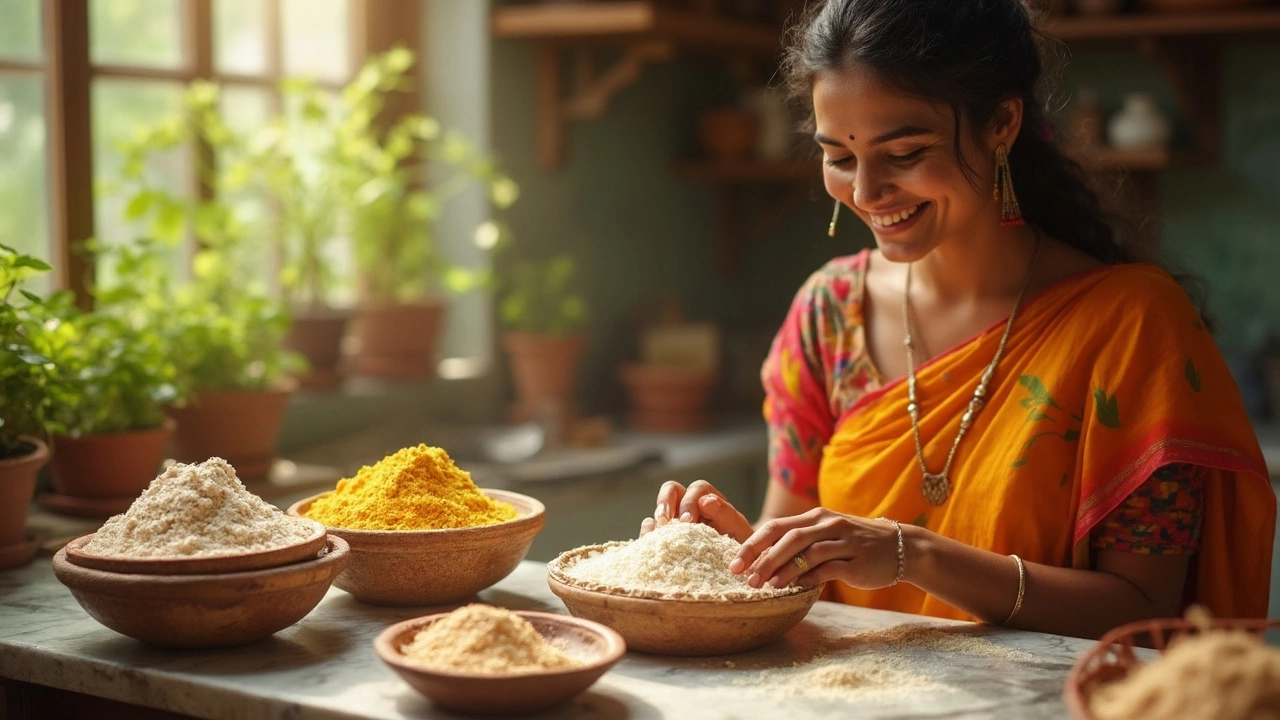Roti Flour: What It Is and Why It Matters
If you’ve ever tried a fresh, puffed roti, you know the difference good flour makes. Roti flour is usually a finely milled whole‑wheat flour, sometimes called "atta" in India. It’s softer than regular whole‑wheat flour, so the dough rolls out thin and cooks quickly. The result is a soft, flexible flatbread that can lift a spoonful of curry without tearing.
People often grab any wheat flour they have, but using the right roti flour changes texture, flavor, and how the dough behaves. The right flour holds enough gluten to stretch, yet stays tender enough for a light bite. Below you’ll find easy ways to pick the best flour, store it right, and turn it into tasty dishes.
Choosing the Right Roti Flour
First, look for a flour labelled "atta" or "whole‑wheat flour for rotis." It should be bright ivory, not grayish. Gray flour usually means the bran was left in, which makes the roti heavy.
Check the protein content – about 10‑12% is ideal. Too low and the dough will crack; too high and the roti becomes chewy. If you can, read the package for “stone‑ground” – that means the wheat was crushed slowly, keeping more nutrients and giving a slightly nutty taste.
When you buy in bulk, smell the flour. Fresh flour has a faint, wheat‑y aroma. Any sour or stale smell means it’s past its prime. Also, pick a brand that packs the flour in a sealed, opaque bag to protect it from light and moisture.
Storing roti flour is simple: keep it in an airtight container in a cool, dry spot. If you buy a large bag, transfer a portion to a smaller jar and seal it. For extra safety, you can store the rest in the freezer; the flour won’t lose flavor, and you’ll avoid bugs.
Easy Roti Flour Recipes
Now that you have the right flour, let’s make a basic roti. Mix 2 cups of roti flour with ½ teaspoon salt. Add a little water – start with ¾ cup and knead. The dough should feel soft, not sticky. Let it rest for 10‑15 minutes; this relaxes the gluten and makes rolling easier.
Divide the dough into golf‑ball sized balls. Lightly dust a rolling board with flour, flatten a ball, and roll it out into a 6‑inch circle. The thickness should be about the size of a postage stamp – thin enough to puff, thick enough to hold the curry.Heat a dry skillet over medium‑high heat. Cook the roti for about 30 seconds until you see bubbles, flip, and cook the other side. Press gently with a cloth or spatula; the roti should puff up. Serve hot with dal, curry, or a dollop of ghee.
If you want a twist, try adding a handful of chopped herbs or spices to the dough. A pinch of cumin or chopped cilantro gives a subtle flavor boost without changing the texture.
Roti flour isn’t just for flatbreads. You can make soft parathas by adding a bit of oil to the dough, or blend it with chickpea flour for a nutritious snack. The key is to keep the dough hydrated and let it rest before shaping.
So next time you’re in the grocery aisle, remember these quick tips: look for bright ivory atta, check protein, smell for freshness, and store airtight. With the right roti flour in your pantry, you’ll be able to whip up soft, fluffy rotis any day of the week.
Best Flour for Soft and Tasty Roti: Choosing the Right One for You
Unravel the secrets behind choosing the best flour for roti. Get facts, tips, and flavor comparisons so you can make mouth-watering, perfectly soft rotis every time.
